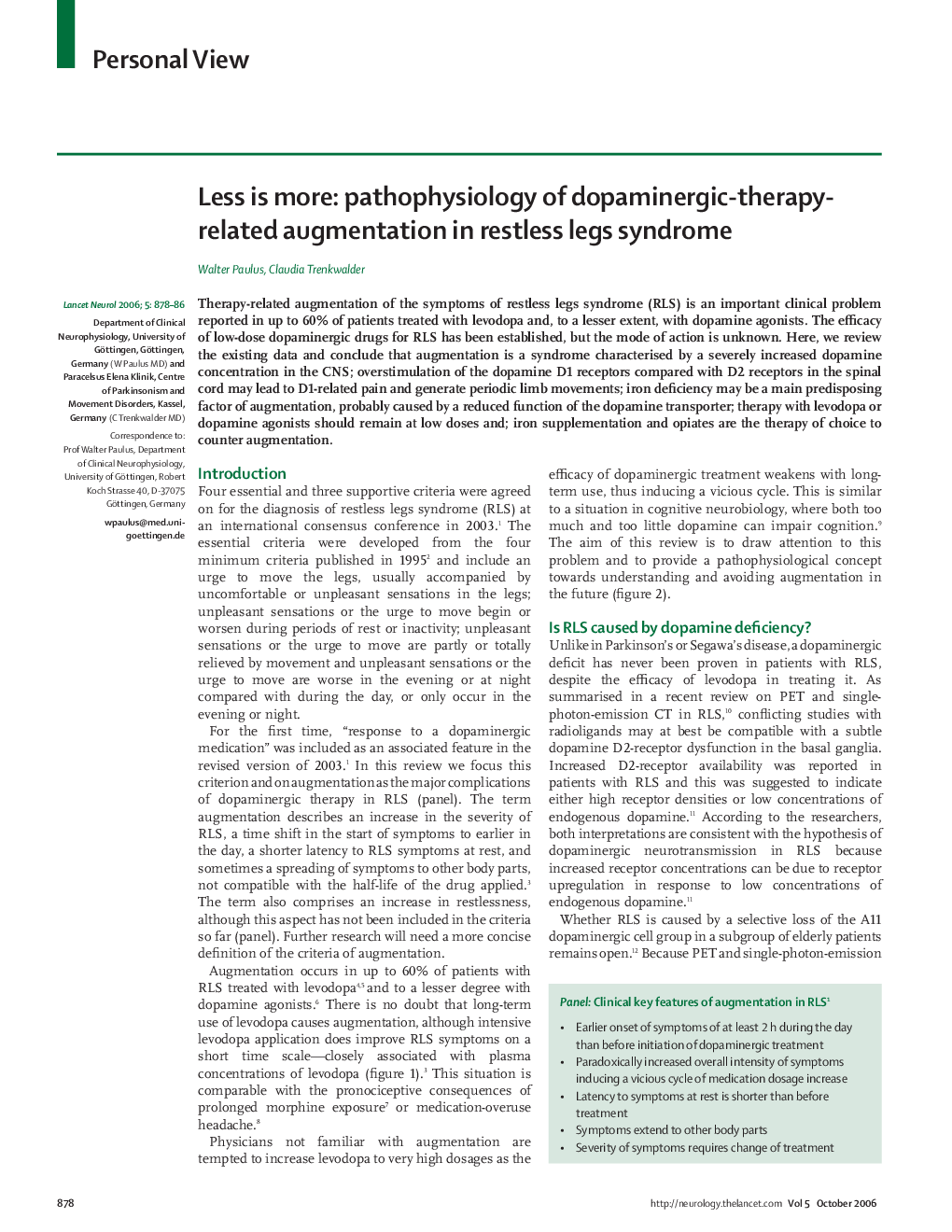| Article ID | Journal | Published Year | Pages | File Type |
|---|---|---|---|---|
| 3068162 | The Lancet Neurology | 2006 | 9 Pages |
SummaryTherapy-related augmentation of the symptoms of restless legs syndrome (RLS) is an important clinical problem reported in up to 60% of patients treated with levodopa and, to a lesser extent, with dopamine agonists. The efficacy of low-dose dopaminergic drugs for RLS has been established, but the mode of action is unknown. Here, we review the existing data and conclude that augmentation is a syndrome characterised by a severely increased dopamine concentration in the CNS; overstimulation of the dopamine D1 receptors compared with D2 receptors in the spinal cord may lead to D1-related pain and generate periodic limb movements; iron deficiency may be a main predisposing factor of augmentation, probably caused by a reduced function of the dopamine transporter; therapy with levodopa or dopamine agonists should remain at low doses and; iron supplementation and opiates are the therapy of choice to counter augmentation.
